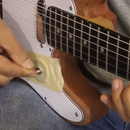Introduction: Camera Slider Control [Arduino Nano]
Do you need a camera slider to get really interesting action shots of you building something, a product, or even what you've built?
Servocity offers a good slider kit, but doesn't have a ready-made controls assembly for it. This post will outline how to take a servo motor modified for continuous rotation, and adapt it to that kit in order to make it truly portable. The downside is that it will be difficult to make it go as slow as the original kit, but not having to drag around an umbilical cord makes it easy to transport to your preferred filming location.
You'll also need a servo plate, coupling, standoffs, and a couple 6-32 screws to properly mount the servo. Video of the process can be found here, and it'll be embedded a the end of the video.
This concept could likely be used with other types of sliders, but would need to be adapted to the mechanism you're using.
Step 1: Electronics and Materials Needed
Electronics will need to be attached together as shown in the Fritzing diagram here. Note the two pulldown resistors used between the stop switches and ground to keep the signal low until its pushed (technically, they should probably be set up as active-low)
- On/off switch/button
- Arduino Nano
- Servo
- Potentiometer
- (2) switches
- (2) resistors
- 9V battery
- 9V battery connector
- capacitor
Note that in a pinch you can use the mini-USB power supply to run your system rather than the 9V battery.
Step 2: Arduino Code
Here's the code that you'll use. You can use nearly any servo code to do initial tests.
Also note that your zero position will need to be modified to ensure that it doesn't keep traveling slowly when cut off. Probably a transistor cutoff would be even better if you're concerned about it crashing.
Attachments
Step 3: Enclosure
The Enclosure is made from a scrap piece of wood, with a channel cut wide enough to accommodate a 9V battery along with a lot of hot glue and a piece of polycarbonate as a cover. I pretty much made this up as I went along, so I'll refer you to the video for construction. One technique that I especially enjoy is using magnets to attach the cover—so easy to make, and so easy to remove when you need to fiddle with the electronics.
Let me know in the comments if you have any specific questions!
Step 4: Video
As promised, here's the video. If you enjoy it—or even if you don't—I'd invite you to subscribe via this YouTube link to see what comes next! I'm guessing there will be more panning shots of whatever I do end up making :-)














